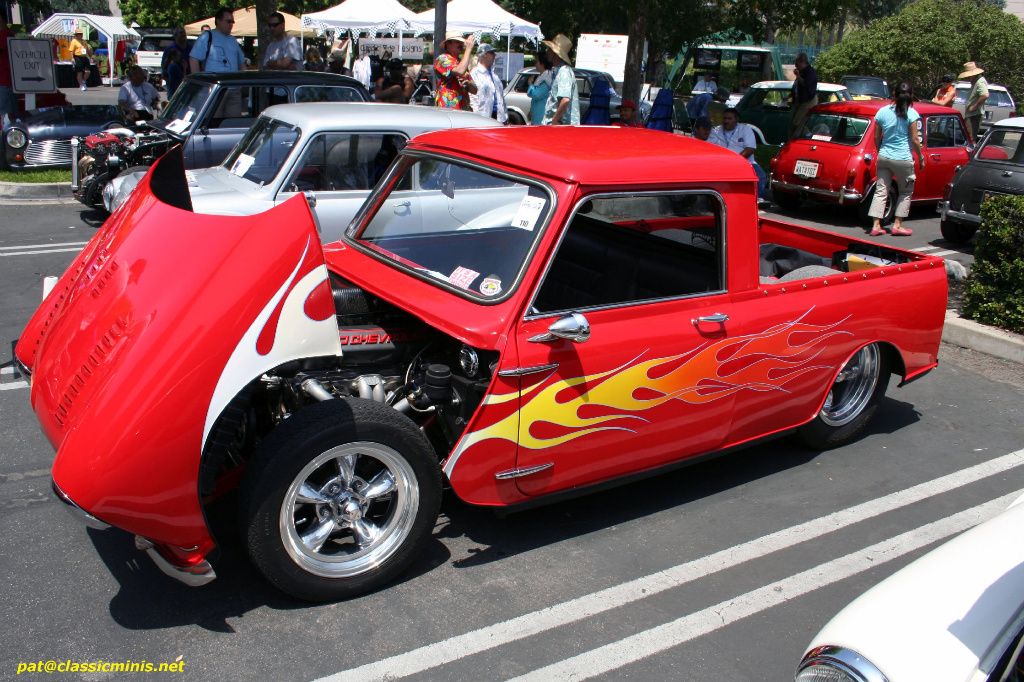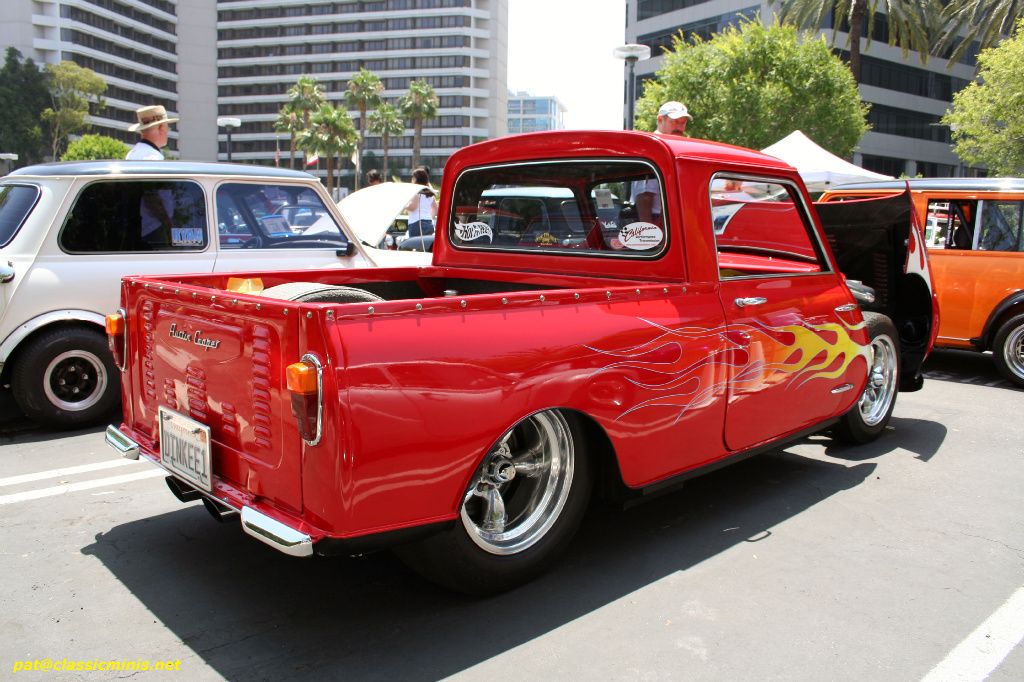Viku's V8 Clubman has a transverse mounted Rover V8 on a Mini style transverse gears in sump Austin Princess 2200 gearbox with FWD, so it retains the Rover and Issigonis connection and is truly a masterpiece of engineering: 
Pictures here:
http://www.spagweb.c...u/viku_pics.htmQuote:The great illusion !! This conversion kept Viku busy for a couple of years, first the initial planning, then finding the bits and then the actual work ! I was very surprised when I heard about his choice for gearbox !
So here’s (quite) a few questions
Was an adapter plate made to go between the end of the engine/box and the clutch housing ??If you look at the photo showing the various components you'll see several adapters. First there are a couple of alloy sheets fitted on the block. This is to enable the box and block to be bolted together. Then there is a piece of alloy welded on the gearbox case to lengthen the box below the front of the engine. This is because the lock is longer.
OK, that's the odd bit with the U shape machined into it to clear the crank ?I suppose that a part sump could be fitted in place of that, though strength and sealing would be compromised.
Yes on both accounts.
Then there are the two plates on the left of the photo. The upper shows a thin section of alloy that bolts to the rear of the block. The lower part is the end plate from Princess that has been partly machined to get the surface flat. The upper plate fits between the block and the end plate. The part of the block were the starter is fitted was removed and a new fitting for the starter is on the endplate. Princess starter was used.
That makes sense, I see how the bolt holes line up now. Why was it done that way as opposed to just making a single plate ?I suppose that the Princess end plate carries various drillings /
fittings / bosses for drop gear vs. gearbox so this was required anyway.
IIRC it did not have enough material so a spacer plate was required.
Looking at the length of the input shaft to the box, and the end of the clutch housing it would appear that the transfer gears are on the outside end of the clutch ??Correct. However the clutch setup is conventional. I.e. block, flywheel, clutch plate, pressure plate.
How much of the box/clutch/transfer stuff was from the Princess ?Box and transfer gears are std Princess stuff. Especially transfer gears are HUGE! Flywheel is partly Range rover, partly Princess. Bolted together !!! Clutch plate is from Saab Turbo, pressure plate (diaphragm) from Rover 800 series.
Don't understand the bit about the flywheel, but I guess that the crank end is Range Rover because it will fit the crank tail, and the rest was chosen to fit to the Princess gears ?Yes, the Range Rover flywheel was mostly discarded, the only thing that's left is the flange. Princess flywheel was machined at the center to make a snug fit to the Range Rover flange and these to fitted together with M6 bolts (!!!!), Number of bolts around 10 pcs. This has always puzzled me, How on earth can they transmit the torque...
I can't see any gearchange linkage, does it come out mini-style from under the diff ??Yes, in fact Mini rod change fits directly to Princess box.
Will the box handle the torque for long without exploding?Judging by the size of the gears yes. Those who have dealt with
Princess say that the gearbox is the only thing that never needed fixing...
Was the diff machined just to get a specific ratio or to accept better pot joints ?Simply for taller ratio, ratio is just about as tall as could physically be machined and still fit in the box.
What combination of parts is used for the driveshafts/cv ?Inner part Princess, outer part Mini. Outer CV´s normal Mini.
Custom driveshafts to fit from Princess pot joints to mini CV ??Well sort of, std Mini shaft cut and a slot machined into it. Princess shaft cut and machined to fit the slot. Something like A+ oil pump drive. A sleeve was machined to fit outside the shaft and keep the ends in line. The sleeve is welded on the shafts. Otherwise the connection is mechanical. I can send you a drawing to clarify this point.
This is a temporary budget solution since Viku suspected that the weak point is the outer splines at the CV. He did not want to spend money on custom made set if the CV would fail. He made 3 driveshafts which are basically of same length so he has one spare if one fails.
How much heavier is the front of the car and was the suspension altered ?Total weight 780 kg, front end 500 kg. Normal tweaks, negative camber arms, std front subframe, Metro vented 4-pots with Mintex pads.
Any idea how that compares to a std mini ??He did not measure the can but since I also have a Clubman we might weigh my car for comparison.
Was much work required to change the engine bay other than changing the engine mounting points ??Bulkhead and crossmember behind the engine is as original. IIRC he had to hit a small dent somewhere. Left inner wing is cut at some locations to clear the water pump, oil cleaner and crank pulley.
Right inner wing was cut because of the radiator, otherwise it would have been just about as original.
At front the ex manifold just about sits where the grille is so the grill was relieved of material at some locations and thin spacers have been fitted between the bodyshell and the grille.
He squeezed the engine under the bonnet by tilting it backwards about 10 degrees and fitting a Offenhauser manifold. Also the Edelbrock carb has been machined lower by removing the choke. It starts anyway so who needs choke...
From the manifold shown where do the two pipes join and how are they routed around the engine ??I think they join just behind the diff.
http://www.spagweb.c...000/2000_11.htm
Edited by mab01uk, 21 December 2010 - 07:19 PM.
 500x_mini_cooper_cummins_v18.jpg 53.63K
59 downloads
500x_mini_cooper_cummins_v18.jpg 53.63K
59 downloads
 500x_mini_cooper_cummins_v18.jpg 53.63K
59 downloads
500x_mini_cooper_cummins_v18.jpg 53.63K
59 downloads500x_mini_cooper_cummins_v18.jpg 53.63K 59 downloads



500x_mini_cooper_cummins_v18.jpg 53.63K 59 downloads


